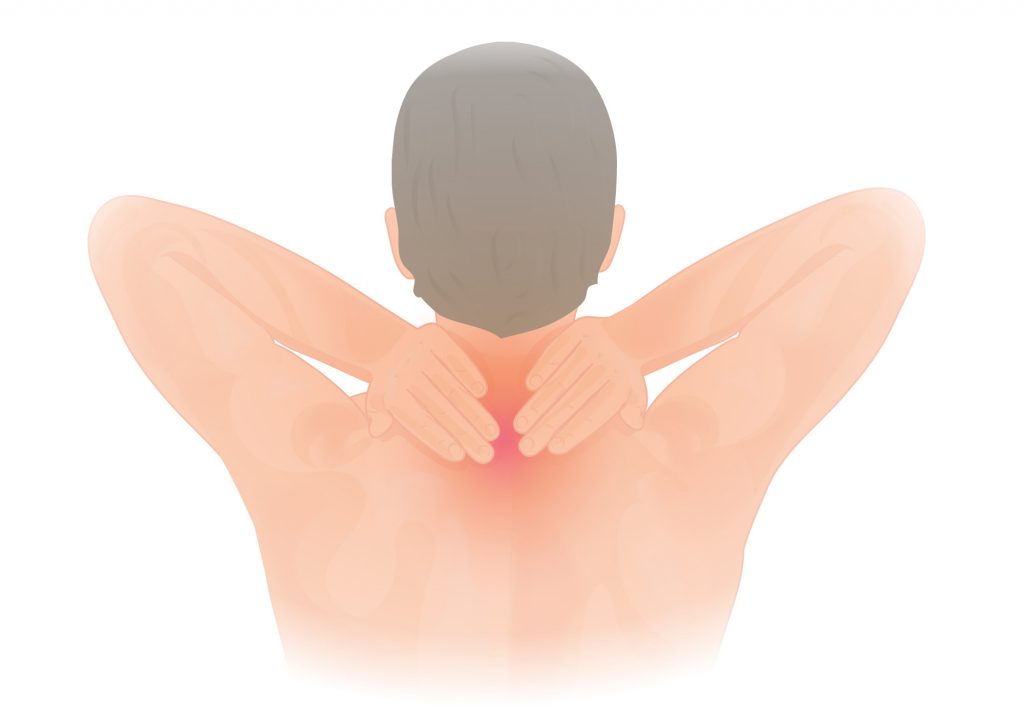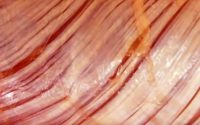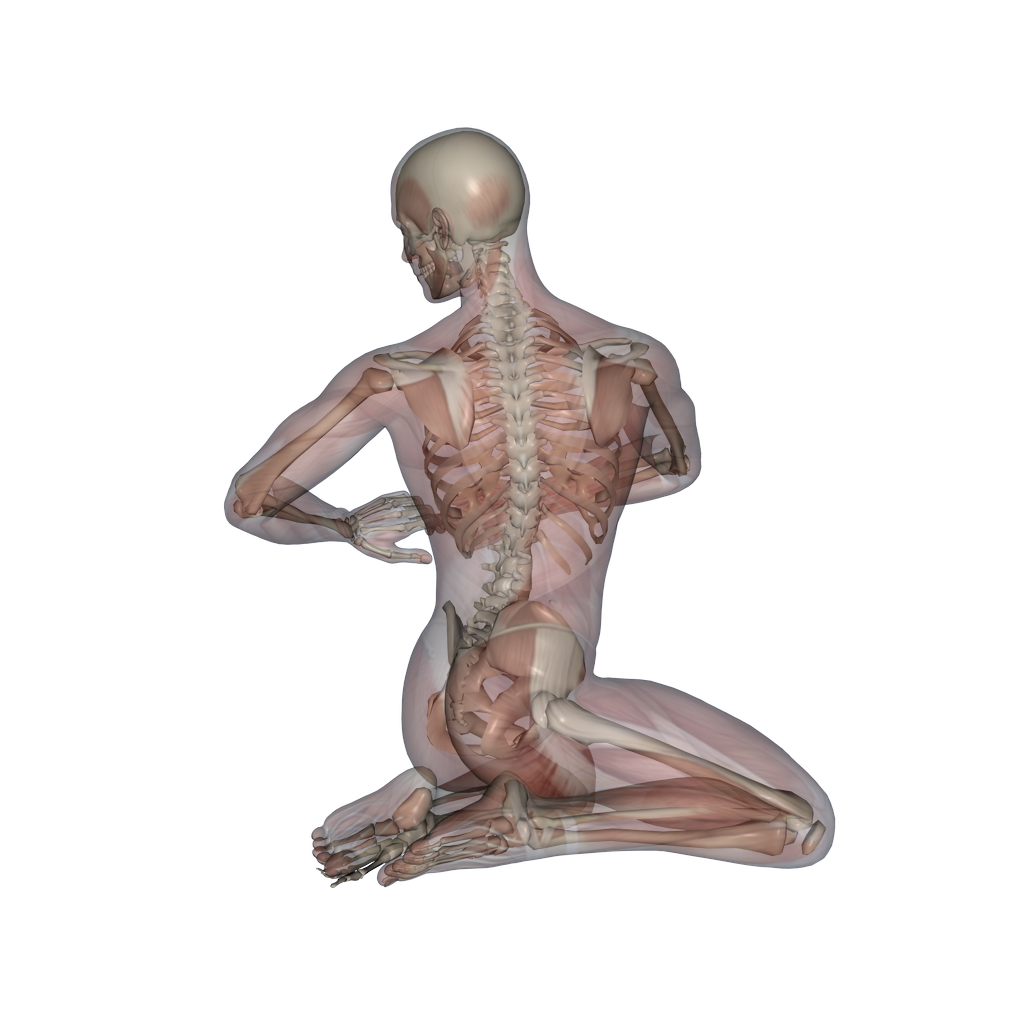Tissue and Muscle Stiffness is Not Related to Pain Experience
We usually assume that people with chronic neck or back pain will exhibit increased stiffness on related muscles. Manual therapists working with people with chronic neck pain will try to “loosen” those tight neck and shoulder muscles. Recently there is also another view that pain is not be related to muscle stiffness. For example, some studies found increased stiffness of splenius and trapezius muscles in people with neck pain, while other studies found similar stiffness between people with and without neck pain. Thus, there is still no clear evidence of whether people with neck or back pain will demonstrate an increase in neck or back muscle stiffness.
Two recent studies looked at the relationship between muscle pain and stiffness.
Muscle stiffness in neck pain
The first study led by Angela Dietrich from Gottingen in Germany compared the stiffness of the neck muscles between women with chronic non-specific neck pain and asymptomatic controls. The study was published in the Journal of Orthopaedic & Sports Physical Therapy.
The study recruited 20 women (median age 50 years) with chronic non-specific neck pain and 18 asymptomatic women. They were asked to perform various tasks: relaxed sitting, isometric neck extension at various forces. 30-degree rotation, prone relaxed, prone head lift, desk stress, sitting with 1 kg sand balanced on the head. Muscle stiffness of neck extensor muscles and surrounding area: trapezius, splenius capitis, semispinalis capitis, semispinalis cervicis and multifidus muscles were measured using an instrument called ultrasound shear wave elastography.
The results showed that women with neck pain showed a reduced neck ROM. However, over all tasks, the average neck muscle stiffness was not significantly different between those with neck pain and the asymptomatic group. Participants with neck pain reported sensations of neck stiffness, but measurements did not show higher muscle stiffness.
The authors concluded that muscle stiffness measured using shear wave elastography showed similar muscle stiffness in people with and without chronic neck pain despite the sensation of increased neck stiffness in those with chronic neck pain.
Figure: Average neck stiffness at various positions for participants with neck pain (purple) and without neck pain (red). The ‘box and whisker’ represent the range of measured stiffness values. The line in the box indicates the median of observations, while the whiskers indicate the observed lower and higher values. From Dietrich et al. (2019)
Tissue stiffness in neck and back pain
In a second study, led by Ann-Kathrin Lederer from Freiburg, Germany looked at the relation between myofascial stiffness with pain experience in patients with chronic (>3 months) back and neck pain. They also studied whether the stiffness can be altered by a cupping massage. The study was published in Evidence-Based Complementary & Alternative Medicine.
The study recruited 40 patients with neck (n = 20) or lower back pain (n = 20). The participant point to the location which felt the maximum pain intensity on the neck or back. The tissue stiffness on the pain area was measured using an instrument called myometer. The study observed the painful side and the contralateral side served as control. The side of higher stiffness was then treated with a cupping massage. Tissue stiffness was measured again 5, 10, 15, and 20 minutes as well as 24 hours after treatment. Patients rated their pain on a standardized pain questionnaire (neck pain disability score (NDI) or Oswestry disability index (ODI), respectively) before and 24 hours after treatment.
The results showed that compared to the contralateral control side, the more painful side did not exhibit an increased stiffness of myofascial tissue. After cupping, the tissue stiffness and the side difference between treated and nontreated control sides decreased significantly but returned to baseline after 24 hours. NDI and ODI scores significantly decreased 24 hours after cupping.
The authors concluded that tissue stiffness might not be related to pain experience in patients with chronic neck and lower back pain. Pain relief after cupping massage cannot be explained by reducing tissue stiffness. The pain relief could be duet to analgesic effect. Counter irritation from cupping stimuli could modulate pain level.
Pain and muscle stiffness
Authors Dietrich et al. further asked the question, “Why do patients feel muscle stiffness?” They hypothesised that the feeling of stiffness during neck movement means that the sensory feedback that is received with the motion does not fit the unconscious expectations. Usually, the sensation of movement does not come into awareness when it fits into the expectations. Stiffness to neck movement may be perceived when there is a delay in movement. The central nervous system may interpret a small delayed neck movement as the result of muscle stiffness. The authors cautioned that the physiology behind the sensation of stiff neck muscles and the complexity of influencing factors is still not well understood.
They added that manual therapy usually aims to reduce neck muscle tone based on the assumption that perceived neck stiffness corresponds to objective muscle stiffness. The findings from this research question this common assumption. However, I contend this statement, since massage does not affect muscle length or stiffness, it is the perfect therapy. Massage is creating the sensation of “lengthening” or “softening” to tissues that feel stiff.
Recent studies mostly have confirmed that manual therapy did not significantly alter tissue and muscle stiffness including foam rolling, post-exercise massage, and deep tissue massage. A study shows that massage induces an immediate, short-term reduction in muscle stiffness. However, people receiving massage or foam rolled will have a perception of a change in muscle stiffness or feeling stretched with increased ROM, which may be due to neuromodulatory effect of pain decrease.
See also:
- http://www.fascialfitness.net.au/articles/self%e2%80%91myofascial-release-does-not-release-myofascia/
- http://www.fascialfitness.net.au/articles/foam-rolling-increased-range-of-motion-without-altering-muscles-morphology/
- http://www.fascialfitness.net.au/articles/the-effect-of-foam-rolling-on-tissue-stiffness-depends-on-athletes-experience/
- http://www.fascialfitness.net.au/articles/prolonged-sitting-increases-muscle-stiffness-of-the-back/


